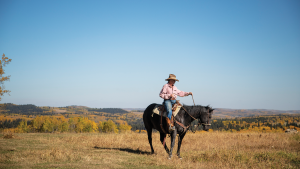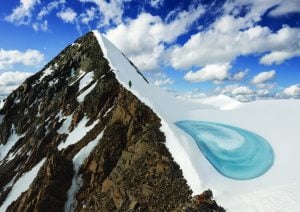The site of the slide is now a designated burial ground and a provincial historical landmark, with the Frank Slide Interpretive Centre to educate visitors — more than 50,000 stopped by in 2022 — on the disaster. Each year, Frank also sees ambitious rock climbers partake in the Tour de Frank bouldering festival, tackling the shedded mountain blanketing part of the old townsite. And a challenging trail run called Run the Rocks was created in honour of Sid Choquette, a brakeman for the Canadian Pacific Railway who scrambled across the debris on the night of the slide to prevent an oncoming train from colliding with the limestone blocking the tracks.
Turtle Mountain has always been unstable — the Blackfoot and Kutenai Peoples knew the peak as “the mountain that moves” and wouldn’t camp near it. Since the 1930s, geologists from the Alberta Geological Survey have constantly monitored the mountain, measuring fissure growth, tracking shifts in the rock and identifying potential danger zones. Geologists say the next landslide isn’t an if; it’s a when, as the fractured forces holding up the top of the mountain surrender to gravity. And while they believe a slide is coming, they predict it will be much smaller than the 1903 Frank Slide and it won’t happen any time soon — unless, they caution, an earthquake shakes things up.
Bruce Kutcher has called Frank home for more than seven decades — his grandparents immigrated to the area around 1920. He remembers scrambling across the rocks as a child, playing tag and jumping from boulder to boulder to see how far his legs would take him. The baseball diamonds he played on were shaded by Turtle Mountain, towering over like a watchful umpire. The rubble was Kutcher’s playground, his backyard, the backdrop to his childhood. “Instead of a sandbox to play in, we had Frank Slide,” he says.







